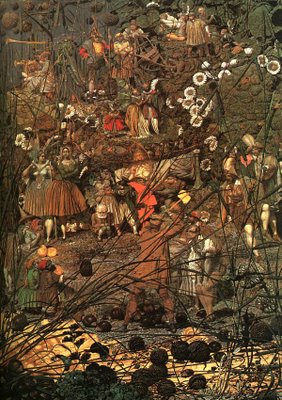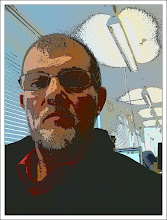 Fairy Feller's Master Stroke - Richard Dadd
Fairy Feller's Master Stroke - Richard DaddMidsummer or the summer solstice, a word that comes from the Latin sol sistere - meaning "the static Sun", since at this time of year and on the first day of winter, sunrises and sunsets only vary by a few seconds, giving the impression that the sun is staying still. Although the solstice is traditionally known as "midsummer", our modern society often uses it as the first "official" day of summer.
After Christianity became adopted in Britain, the festival became known as St John's day and was still celebrated as an important day in the church calendar; the birthday of St John the Baptist. Traditionally St John's Eve (like the eve of many festivals) was seen as a time when the veil between this world and the next was thin, and when powerful forces were abroad. Vigils were often held during the night and it was said that if you spent a night at a sacred site during Midsummer Eve, you would gain the powers of a bard, on the down side you could also end up utterly mad, dead, or be spirited away by the fairies.
Indeed St Johns Eve was a time when fairies were thought to be abroad and at their most powerful (hence Shakespeare's Midsummer Night's Dream).
-
MIDSUMMER NIGHT'S DREAM -
An original painting by P. Gervais




